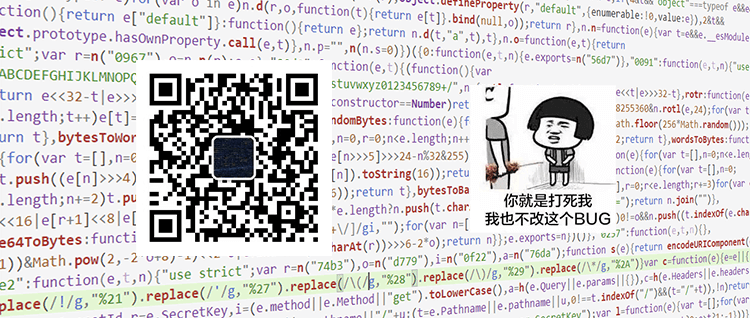toFixed()与银行家舍入
一直在用
toFixed()方法做浮点数的舍入取值,如果只是客户端展示数据是没有多大问题的,但是如果涉及到和后端互交,数据的精度可能会导致接口对接失败,当然了,涉及安全性的数值,比如金额之类的不应该放在前端计算,应该以后端为准,少数情况下如果需要的时候,则需要修复其精度
1.出现问题的场景
- 首先,我们发现在ie浏览器与其他的主流浏览器中,由于二进制下浮点数的存储问题,
toFixed()的行为是不一样的,也说明了各浏览器厂家的做法不一致。
在ie11中:
10.015.toFixed(2)
2// 打印结果:"0.02"
在chrome中:
10.015.toFixed(2)
2// 打印结果:"0.01"
对于此类问题,部分场景是不可接受的,测试可能会打出一个兼容性的bug
- 其次,我们虽然知道,
toFixed()是一种银行家舍入,但是他确是入五取单,而不是银行家舍入所说的入五取双,同样是银行家舍入,此函数计算精度与后台java等语言的银行家舍入精度不同,可能照成接口验证失败。
在前端浏览器中:
10.025.toFixed(2)
2// 打印结果:"0.03"
30.035.toFixed(2)
4// 打印结果:"0.03"
在后端服务器中:
10.025.setScale(2,RoundingMode.HALF_EVEN)
2// 打印结果:"0.02"
30.035.setScale(2,RoundingMode.HALF_EVEN)
4// 打印结果:"0.04"
事实上,正确的做法应该是:有关金额的运算应该完全交由后端计算,然后交给前端展示
2.修复方案
方案很简单,我们只要重写Number.prototype.toFixed方法就可以了。
- 如果我们需要普通的四舍五入:
1/* eslint-disable no-extend-native */ // 规避eslint不可修改原型报错
2Number.prototype.originalToFixed = Number.prototype.toFixed // 保留原方法
3Number.prototype.toFixed = function(length = 0) { // 默认保留0位小数
4 let result
5 // 处理负数
6 let that = this
7 let isNegative = false
8 if (this < 0) {
9 isNegative = true
10 that = -this
11 }
12 let thisNum = that.toString()
13 if (thisNum.indexOf('.') === -1) thisNum = thisNum + '.0'
14 for (let i = 0; i < length; i++) {
15 thisNum = thisNum + '0'
16 }
17 const dotIndex = thisNum.indexOf('.')
18 thisNum = thisNum.slice(0, dotIndex) + thisNum.slice((dotIndex + 1), (dotIndex + 1 + length)) + '.' + thisNum.slice(dotIndex + 1 + length)
19 thisNum = Number(thisNum).toString()
20 const thisNumList = thisNum.split('.') // 分离整数与小数
21 if (thisNumList.length === 1) result = thisNum.toString() // 如果只有整数,则不需要处理
22 else {
23 if (Number(thisNumList[1][0]) >= 5) result = (Number(thisNumList[0]) + 1).toString() // 五入
24 else result = thisNumList[0] // 四舍
25 }
26 if (length === 0) return `${isNegative ? '-' : ''}${result}`
27 else {
28 while (result.length < length + 1) { // 如果位数不够,则用0补齐
29 result = '0' + result
30 }
31 return result.slice(0, (result.length - length)) + '.' + result.slice(result.length - length)
32 }
33}
- 如果我们需要使用正常的银行家舍入:
1/* eslint-disable no-extend-native */ // 规避eslint不可修改原型报错
2Number.prototype.originalToFixed = Number.prototype.toFixed // 保留原方法
3Number.prototype.toFixed = function(length = 0) { // 默认保留0位小数
4 let result
5 // 处理负数
6 let that = this
7 let isNegative = false
8 if (this < 0) {
9 isNegative = true
10 that = -this
11 }
12 let thisNum = that.toString()
13 if (thisNum.indexOf('.') === -1) thisNum = thisNum + '.0'
14 for (let i = 0; i < length; i++) {
15 thisNum = thisNum + '0'
16 }
17 const dotIndex = thisNum.indexOf('.')
18 thisNum = thisNum.slice(0, dotIndex) + thisNum.slice((dotIndex + 1), (dotIndex + 1 + length)) + '.' + thisNum.slice(dotIndex + 1 + length)
19 thisNum = Number(thisNum).toString()
20 const thisNumList = thisNum.split('.') // 分离整数与小数
21 if (thisNumList.length === 1) result = thisNum.toString() // 如果只有整数,则不需要处理
22 else {
23 if (Number(thisNumList[1][0]) > 5) result = (Number(thisNumList[0]) + 1).toString() // 六入
24 else if (Number(thisNumList[1][0]) < 5) result = thisNumList[0] // 四舍
25 else { // 判断5的情况
26 if (thisNumList[1].length > 1) result = (Number(thisNumList[0]) + 1).toString() // 如果5后还有位数则入
27 else {
28 if (Number(thisNumList[0][thisNumList[0].length - 1]) % 2 === 0) result = thisNumList[0] // 五前为偶应舍去
29 else result = (Number(thisNumList[0]) + 1).toString() // 五前为奇要进一
30 }
31 }
32 }
33 if (length === 0) return `${isNegative ? '-' : ''}${result}`
34 else {
35 while (result.length < length + 1) { // 如果位数不够,则用0补齐
36 result = '0' + result
37 }
38 return `${isNegative ? '-' : ''}${result.slice(0, (result.length - length)) + '.' + result.slice(result.length - length)}`
39 }
40}
这样就统一了舍入的精度,可以根据后台需要选择。
